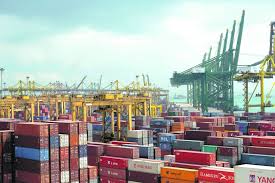Plunging Exports Will Result in Many Years of Slow Growth Without a Change in Policy

In the light of the big drop in exports in January 2016 over the same month last year it is likely that growth for the final quarter of 2015 will be revised downwards. Non-oil domestic exports (NODX) fell by nearly 10% on their level a year ago while total exports fell by much more, over 15%. Imports also fell by 13%. For estimated GDP on an expenditure basis, which is likely to be more accurate than the output basis used by MTI, total imports and exports are the relevant figures and not NODX.
Initially Ministry of Trade and Industry (MTI) estimated that the economy grew by 2.0% year-on-year in the last quarter of 2015 and at a 2.1% annualised rate for the whole of 2015. To get to this figure, which looks suspiciously massaged to get within MTI’s previous forecast that the economy would grown between 2% and 4% for the whole of 2015, MTI calculated that the economy grew at a blistering pace of 5.7% annualised in the final quarter as compared to the preceding quarter. This was largely driven by growth in the services and construction sectors while manufacturing slumped.
It seems strange that there was such a significant out-performance in the services sector since many services are related to and positively correlated with manufacturing.However outperformance by the service sector is unlikely to continue and to offset continuing declines in exports. Wholesale and retail trade will be affected by the multiplier of lower incomes in manufacturing and property and also by the continuing slowdown in tourist arrivals. Finance and insurance will be affected by the equity bear market as well as by regional recession.
Even if we accept MTI’s figures for services at face value, the new figures showing exports falling much faster than expected are likely to mean a downward revision for GDP in the fourth quarter 2015 which may result in whole-year GDP falling below MTI’s lower bound forecast of 2%. It is possible that manufacturers did not adjust output but allowed inventory to pile up in which case there will be an inventory adjustment and lower GDP in subsequent quarters.
No doubt the Government will do nothing except to call on Singaporeans to be nimble and move up the value chain. This was also the call from some of the economists quoted in the State Times report . However all the agility in the world is not going to save our exporters when global demand is falling so rapidly driven by recession and massive overcapacity in China. US demand for imports is also falling, a sure sign that the US is close to a recession despite the rosy forecasts from the Fed.
That is why I have called for a stimulus package repeatedly. You can read the details hereThis is so that Singaporeans will spend more and through the multiplier effects of that spending offset the drop in external demand and prevent GDP from falling further. The Government is unlikely to adopt our recommendations unfortunately on the grounds that this will somehow be a drain on our reserves despite being only about 25% of the cash surplus. If anything I have erred on the side of too little stimulus rather than too much.
The Government’s accounts are not like those of a private company since the Government is able to adjust the level of demand in the economy through the size of its surplus (or deficit). Governments have an obligation to maintain a reasonable level of demand and counteract contractionary pressures from say a dip in external demand or domestic spending driven by a rise in debt. Ultimately it can finance a deficit by borrowing or by printing money. Some might object that this would lead to inflation but with massive global overcapacity this is unlikely to happen.
Despite the overwhelming economic logic for a fiscal stimulus the PAP Government is unlikely to do so. Instead they are likely to go for easier monetary policy instead and allow the Singapore dollar to depreciate in the hope that this will lead to higher exports and more tourist arrivals. . However the example of Japan which went for a big monetary easing while simultaneously tightening fiscal policy (what is dubbed “Abenomics”) is not encouraging. While there has been a boost to exports and company profits this has not fed through to the domestic economy and the country has gone back into recession.
The Government and private sector economists are pinning their hopes on a revival of global trade in the second half of 2016. However given China’s ever-increasing levels of debt and capacity overhang this is unlikely to happen until the excess capacity has been written off. Without a change in fiscal policy Singapore may be in for many years of little or no growth.



answer back